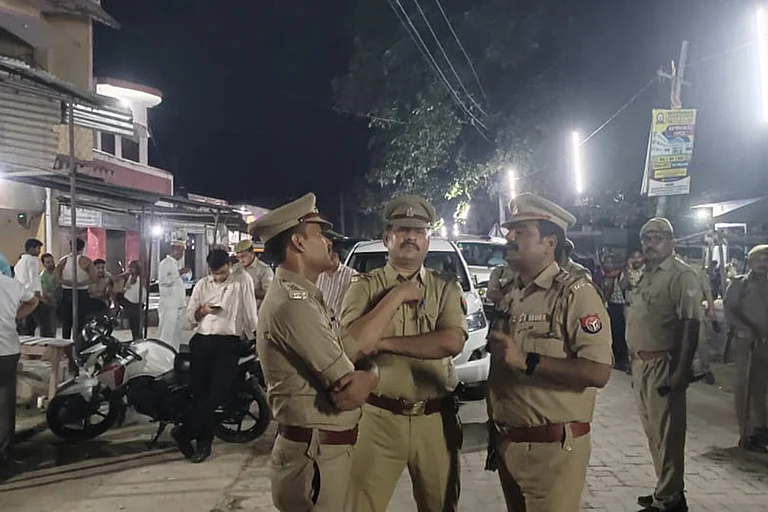Is is heartening that despite being subject to domestic pressures, politicaluncertainties and jingoistic attitudes, India and Pakistan managed to conduct a exchangeof views on substantive issues forreasonable the first time in four years. The point noteis, despite initial signals from Pakistansecond that theto round of talks at Islamabadmight be followed October by a continuation of the dialogue if Pakistannot was notsatisfied on the Kashmir issue, a joint decision has been taken to continue the dialogue.The next round is scheduled in New Delhi in February 1999. The third point to note is thatthe Apex Telecommunications Hot Line between the two prime ministers has been restored.
Two issues on the pre- structured agenda discussed by the foreign secretaries wereJammu and Kashmir and subcontinental security. Nobody expected any dramatic break-throughand all reports indicate that the exchange was on a familiar pattern, with both sidesexpressing their respective points of view. A limitation on negotiating innovativeness indealing with Jammu and Kashmir, which has occurred after the breakdown of talks in 1994,is the fact that there is a parliamentary resolution in India affirming its territorialclaim over the whole of Jammu and Kashmir and demanding the vacation of Pakistanaggression from those areas which Pakistan controls. The BJP s reiterates thiscategorically.Themanifesto government claims is not aPakistan territorial dispute betweentheit two countries but an incomplete aspect of the Partition of India.
The inclination to resolve the problem in a practical manner, tak- ing into account thechanged ground realities over the last 26 years, which was evident in Indo- Pakinteraction on the subject between 1972 and 1989, has now been discarded by Pakistan.Pakistan foreign secretary Shamshad Ahmed stated publicly in the middle of the recentdialogue that the "Indian claim of accession of Kashmir to India is flawed. TheShimla Agreement does not supersede the UN resolutions". This is apart from thecalculated, alarmist and threatening assertion that if India does not give in to Pakistanon Kashmir, there would be increased prospects of a nuclear conflict. While foreignsecretary K. Raghunaths public response was sober, measured and mature, one feels itwas not spirited and assertive enough in refuting Ahmeds remarks point by pointpublicly.
The joint communique issued at the end of the discussions limited itself to theperennial statement that "both sides reiterated their positions and exchangedperceptions on the subject". Though there are no prospects of solving issues relatedto Jammu and Kashmir in the foreseeable future, there seems to be an emerging willingnesson the part of Pakistan and India to explore possible via media. Ahmed is reported to havestated: "Some ideas on how to approach the final settlement of Jammu and Kashmir hadcome up and of course these require further discussions." It would be reasonable topresume that while the negotiating stances remain static, suggestions must have been putthe table by India insome the context of the Shimla Agree-menton and Pakistan, instead ofrejecting them outright, must have made alternative suggestions. It is time India formallysuggests a solution of the Jammu and Kashmir on the basis of converting the "Line ofControl" with suitableissue adjustments into a boundary between India and Pakistan,and then announces this suggestion to the chancelleries of member countries of the UNpublicly. A concrete proposal so far discussed only informally being officially put on thetable might help matters; it would at least bring the discussion to a specific point ofnegotiation.
The two sides discussed regional security affairs, fully conscious of the implicationsof the nuclear weaponisation of both the countries. The Indian suggestion regardingsigning of the no- first- use of nuclear weapons agreement and the extension of theagreement of 1991 to cover population centres and economic locations were rejected byPakistan. Pakistan suggested instead modalities for strategic restraint and stabilisationand a no- war or non- agression pact.
Pakistans rejection of no- first- use is logical from their point of view,considering Indias superiority in conventional forces. India rejecting the Pakistanisuggestion of a no- war pact is equally legitimate in the context of Pakistan linking itwith Kashmir. But it is interesting that both sides have agreed to discuss concreteproposals for maintaining strategic restraint and stabilisation, in the next round, and toexplore possibilities of incremental arrangements to prevent nuclear conflict throughaccidental or unauthorised use of nuclear weapons. Indications that both India andPakistan will become parties to the CTBT and will join the negotiations for the FMCT couldunderpin arrangements for strategic restraint and stabilisation. But India should take adecision on the CTBT and FMCT after a careful and detailed assessment of its securityinterests going beyond considerations of the Indo- Pak relations. One wonders why bothcountries do not implement the agreements already arrived at and initialled on Siachen andthe Tulbul navigation project finalised between 1990 and 1994. I also feel that even ifIndia has to make some additional concessions, we must resolve the problem of thedemarcation of the boundary at Sir Creek. Resolving Siachen and Sir Creek would certainlystrengthen the subcontinental security environment.
That the dialogue is being continued despite initial with- drawal symptoms on the partof Pakistan should be wel- comed. Sharif and Vajpayee talking to each other immedi- atelyafter the last round imparts the necessary political momentum to the process. Reasoningtogether is always better than shooting at each other that may be a truism but itmerits re- emphasis in the context of the bitter legacy of half- a- century of Indo-Pakistan relations.


























